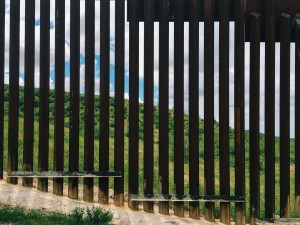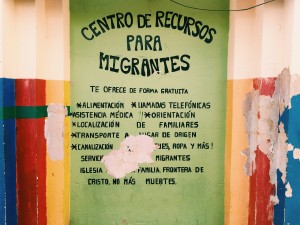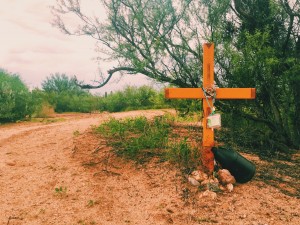
Immigration in the United States is about as multifaceted of an issue as one could imagine. I knew this going into my project, and that’s why I’ve been saying since I began that my purpose is to give faces to as many of those facets as possible—but I had no idea when I began the depths to which this approach would take me. In my first week of research, I have encountered intricacies that I could not have imagined without coming down to the Mexico-U.S. border to experience them myself. Here are two interesting examples of lesser known, yet incredibly relevant, elements of this often grossly over-simplified issue:

Border communities (pairs of cities or towns that adjoin on the border) are frequently very tight-knit. After visiting both Douglas-Agua Prieta and El Paso-Juarez, my takeaway has been that the frequent “legal” border crossing of people from both communities, the sharing of economies, and common histories have allowed these border settlements to flourish almost as one. The thing is that what actually happens in and between these communities is often misrepresented to residents in the interior of the U.S. state involved (i.e. Arizona and Texas). As a result, many Americans believe that these areas are extremely violent and dangerous and that those living on the U.S. side of the border are in grave danger from cartels and human traffickers on the other side of the fence—a sentiment that I have found laughable to those I’ve spoken to in these communities.

The result of this misinformation is equally as interesting, and I spoke with a policy advocacy organization in El Paso that made clear its negative effect: because these state governments have been so overtaken by fear and because the federal government is entrenched in its own inability to act, almost all policy activity has been taking place at the state level. This puts policy advocates in the very sticky situation of being almost perpetually on the defensive, fending off ever more xenophobic state-level policies. As a result, organizations whose intended goal is advocating for immigration reform at the national level have been distracted by frustrating battles within their states.
These intricate dynamics have added infinite dimension to my understanding of the issue and it’s only been one week. I’m looking forward to what else is brought to light over the next several days!

This post gives a lot of insight into the dynamics at the U.S./Mexican border. As someone who has never even been to the South, I was surprised to discover that those stereotypes and preconceptions about violence and fear of drug trafficking are false. Historically, many border communities in the world have had very close, symbiotic relationships involving their economies. Additionally, there tends to be a lot of evidence of cultural diffusion. It’s interesting that the state-level governments are the ones exhibiting xenophobia and blocking immigration reformers, since they are the ones that experience the border communities firsthand. I also wonder how the upcoming election and the increasing tension between the different sides of immigration reform has affected the structure of these border communities.